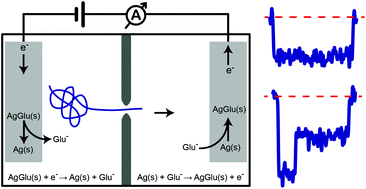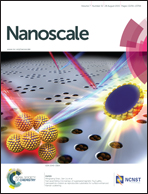DNA nanopore translocation in glutamate solutions
Abstract
Nanopore experiments have traditionally been carried out with chloride-based solutions. Here we introduce silver/silver-glutamate-based electrochemistry as an alternative, and study the viscosity, conductivity, and nanopore translocation characteristics of potassium-, sodium-, and lithium-glutamate solutions. We show that it has a linear response at typical voltages and can be used to detect DNA translocations through a nanopore. The glutamate anion also acts as a redox-capable thickening agent, with high-viscosity solutions capable of slowing down the DNA translocation process by up to 11 times, with a corresponding 7 time reduction in signal. These results demonstrate that glutamate can replace chloride as the primary anion in nanopore resistive pulse sensing.



 Please wait while we load your content...
Please wait while we load your content...